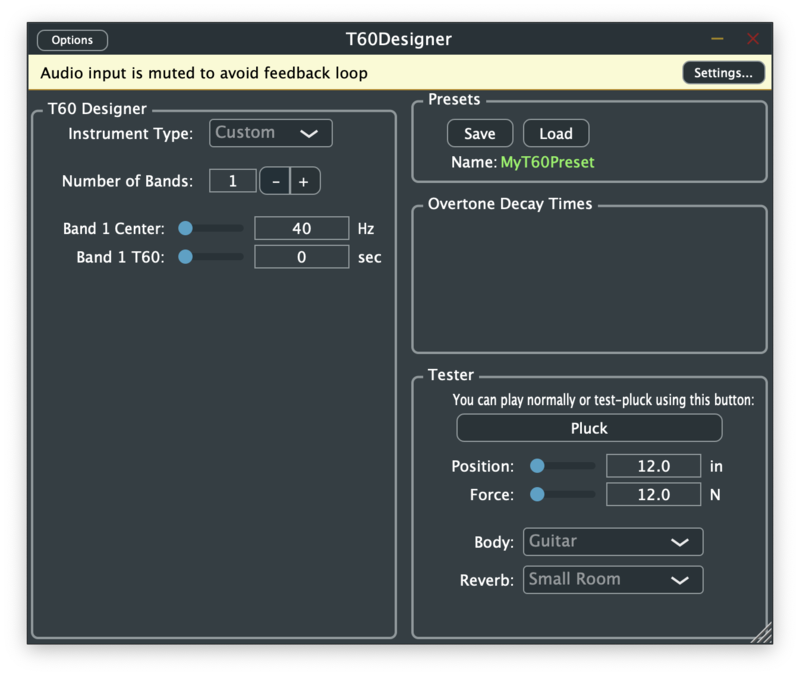Project-jos-320c-2021
Contents
JOS 320C Project Goals
- Make my first "meta plugin" that writes out files for other plugins to read
- Learn how to make better GUIs for plugin Editors
Plan
- Look at some 220C projects for general orientation on project reporting
- Read ahead in the course schedule to learn about GUI options
- Decide on a file format: XML? Plain text? Encrypted?
- I am starting with plain text, and planning to include a hash string generated by a secret algorithm to detect modification if/when needed
- I am now reading all GUI-related JUCE tutorials that are new since I last looked
GUI Prototype
- JUCE GUI Editor used (very quick)
- Band-setting sliders will be programmatically laid out dynamically
- Configured for waveguide string loop filter
- Can also be used to design late reverb
T60 Designer Help
T60 Designer is an audio plugin that designs digital filters based on the desired decay-time in each frequency band.
Workflow Summary
1. Throw together a first GUI using the JUCE GUI Editor (design step) 2. Implement the plugin 3. Recreate the GUI using Plugin GUI Magic 4. Develop final image assets for a professional GUI appearance and drop them in
Decay time is specified by T60, which means "time in seconds to decay by 60 dB" (a term commonly used in reverb acoustics).
Test Pluck Help
When T60 Designer is configured to design a "String Filter", then the "Tester" panel in the lower-right corner provides a Pluck button for hearing the sound of a plucked waveguide string using the loop-filter designed by T60 Designer. When you like what you hear, you can Save it out as a Preset that any compatible plugin can use.
